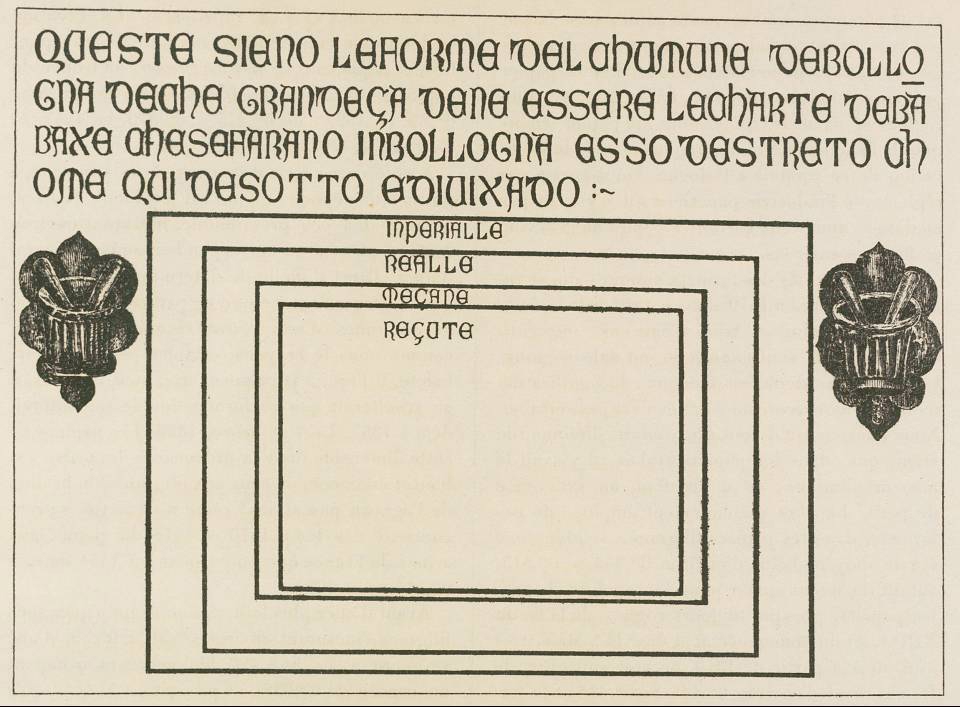
Hand-Press Book Paper Sizes
Digital documents could be any size at all. Using the scroll bars, or shrinking or increasing the size of the whole screen view, users could (theoretically) expand a document the size of a single atom to fill the available display space, or shrink a document the size of the entire universe to fit the same display. Print documents must pass through printing presses of known sizes. Although "supersized" presses could be constructed, they apparently were not economically feasible, perhaps because readers could not manipulate books larger than what are sometimes called "elephant folios." Audubon's famous The Birds of America [London: J.J. Audubon, 1827-39] is a "double elephant folio" with untrimmed pages measuring 39 inches high and 26 3/8 inches (99 x 67 cm) wide, but it was never intended to be held by the reader--special reading easels often are used for such ancestors of the "coffee table book." In fact, Audubon did not make much profit on this most famous edition, but rather earned enough money to build a New York City mansion and support his family after his death by publishing a seven-volume "royal octavo" edition, printed on very large sheets but imposed in octavo format (28 cm). Because printing technology was "gated" by the size of the standard press, paper makers had to standardize their product to fit printers' presses' maximum capacities, and smaller papers for less ambitious productions also were standardized so that printers could be certain they were getting what they paid for. In the public square of Bologna, Italy, a carved stone was displayed so that printers could check paper makers' stocks against these standard sizes, and those four paper sizes, in turn, establish the outer limits for pages sizes of books printed on them. When we get to manuscript books made with "parchment," the generic name for animal skins, what do you suppose determines the size of their pages? For papers found in early English printed books, these four paper sizes translate to these full-sheet dimensions and maximum folded folio page heights: Imperiale 50x74 cm =50 cm; Reale 44.5x61.5 cm =44.5 cm; Mezzena 34.5x51.5 cm =34.5 cm; Recute/Chancery 31.5x45 cm =31.5 cm. Click on the link to see the maximum quarto-folded sheet heights. For all of these paper sheets, the ratio of their width to their height is about 1.414 to 1 (i.e., square root of two to one), which means they could be cut in half (or folded in half) infinitely without losing this proportion. If a printer had larger sheets than needed for a given edition, the printer could halve them as often as necessary and get properly proportioned paper to fit his press.